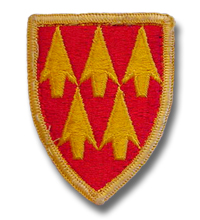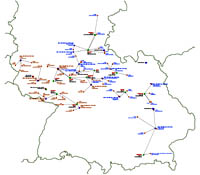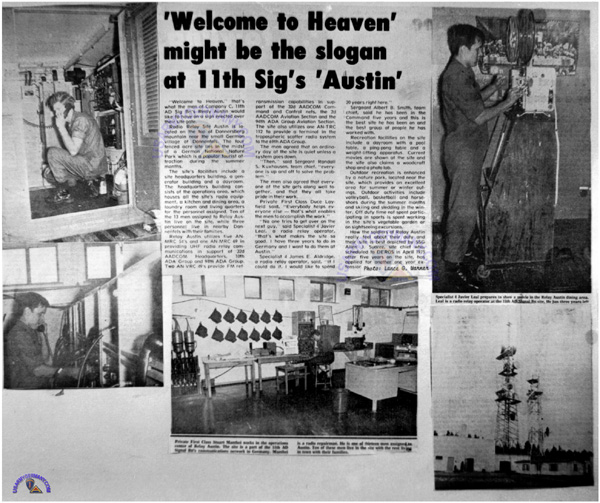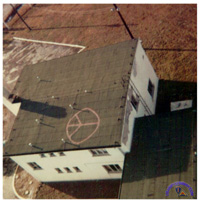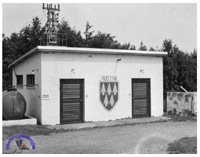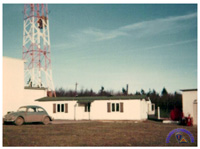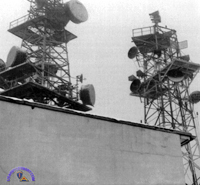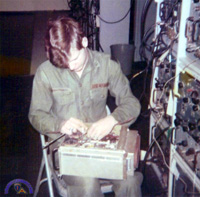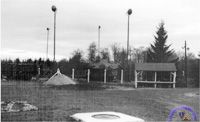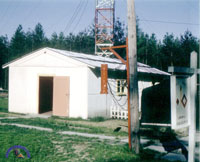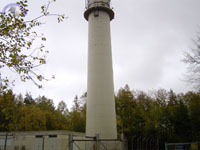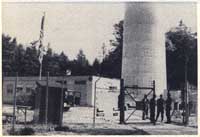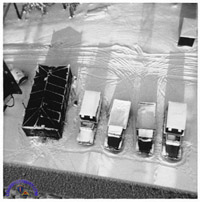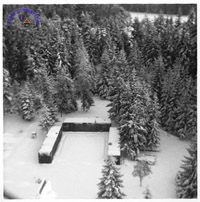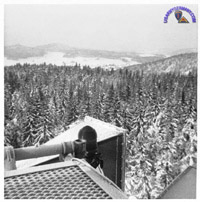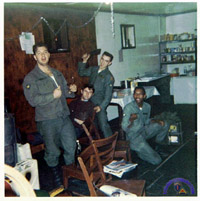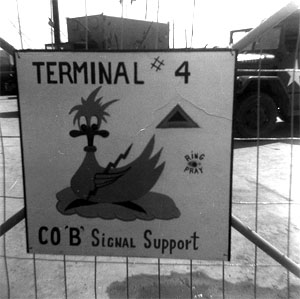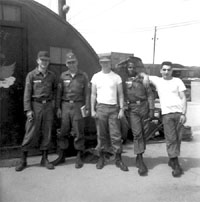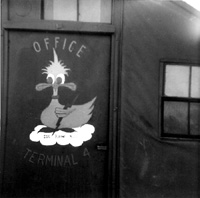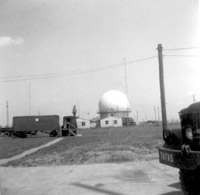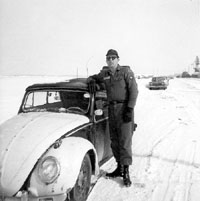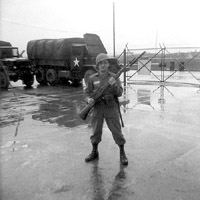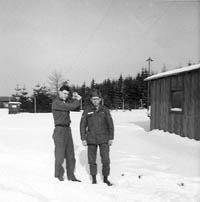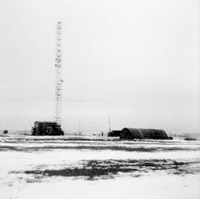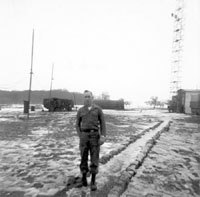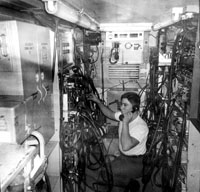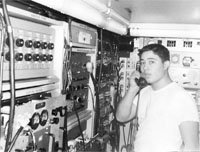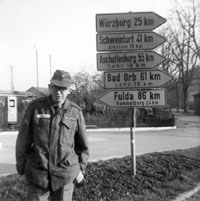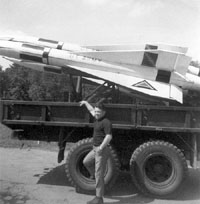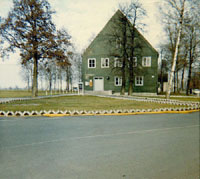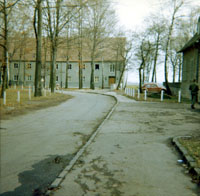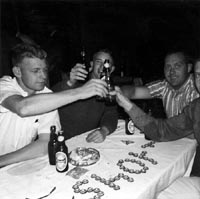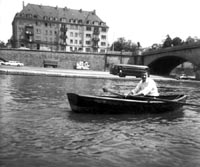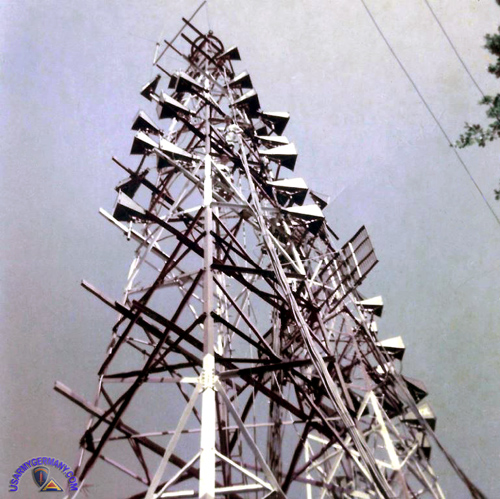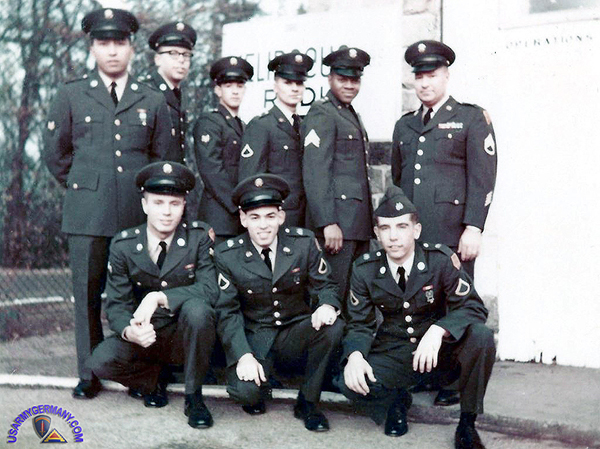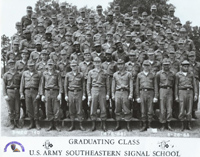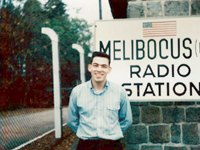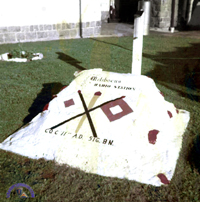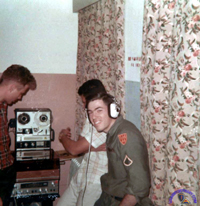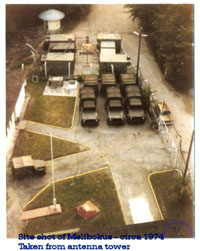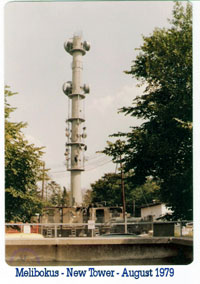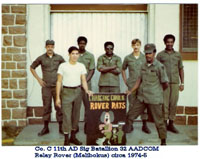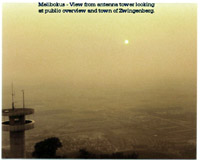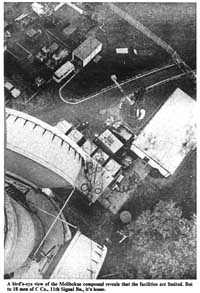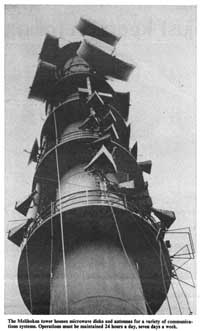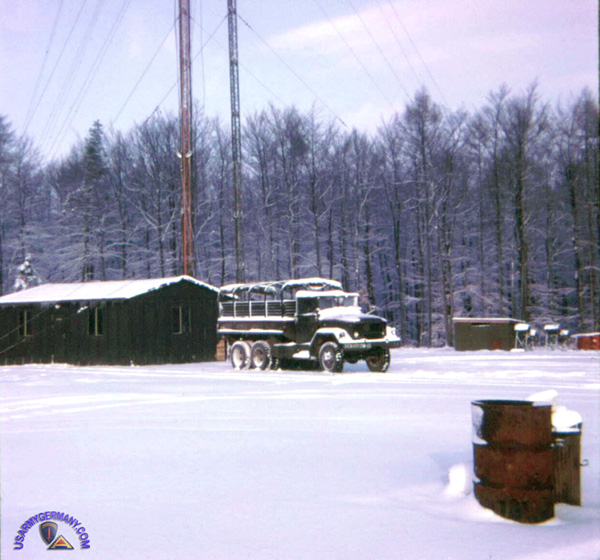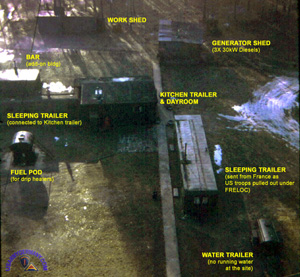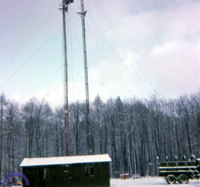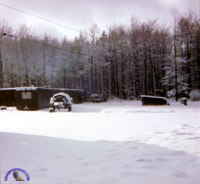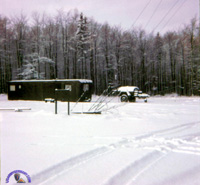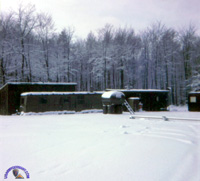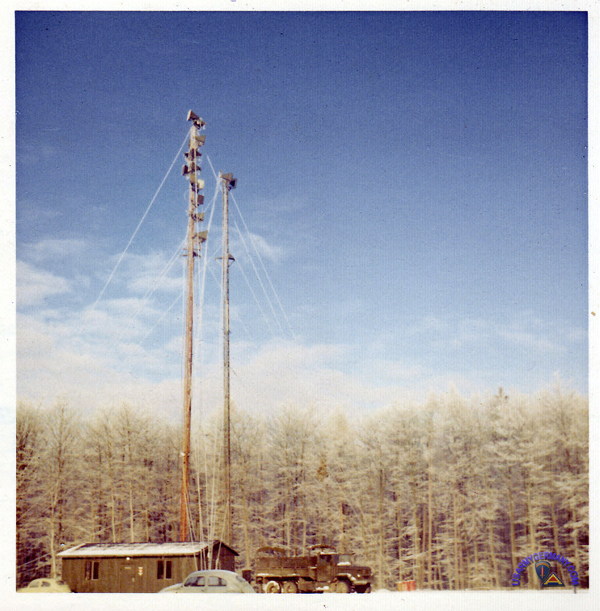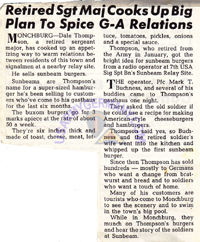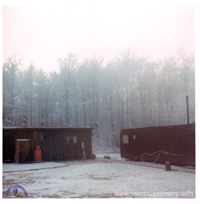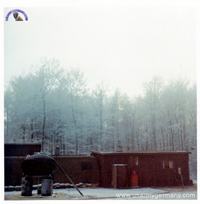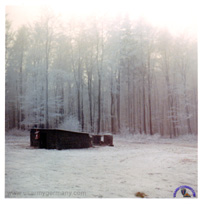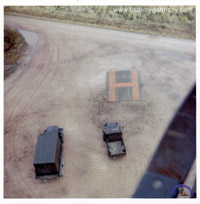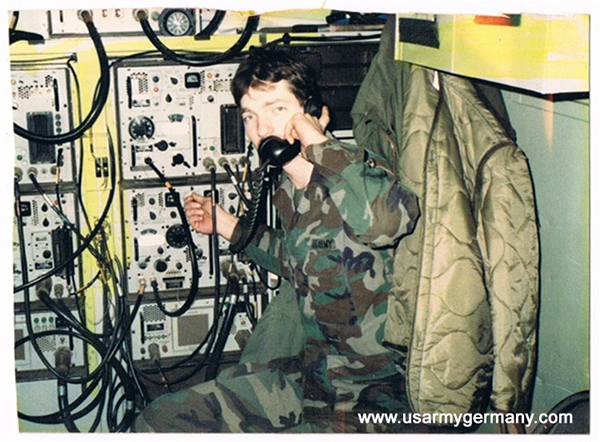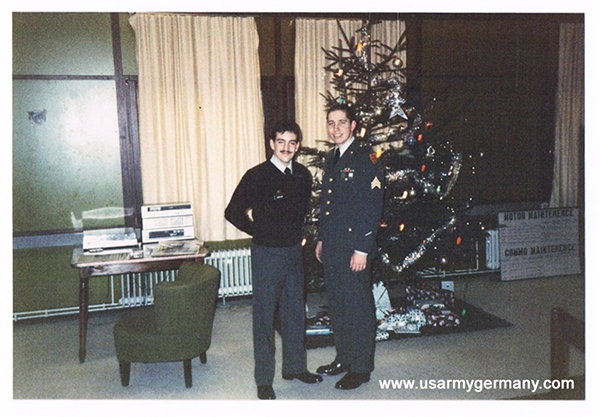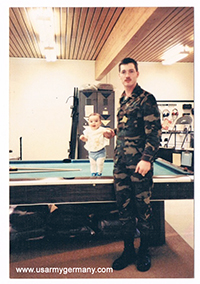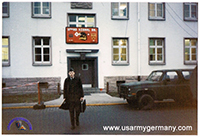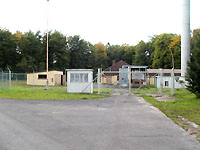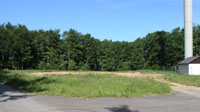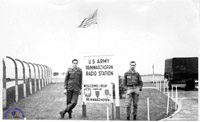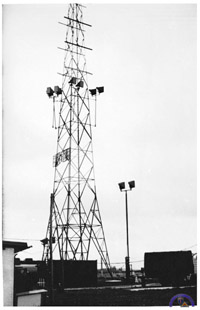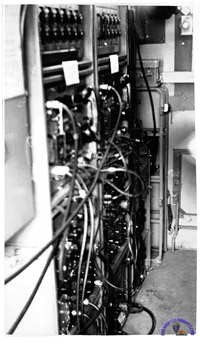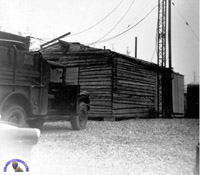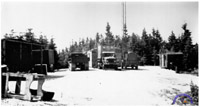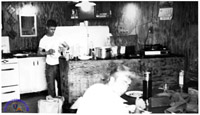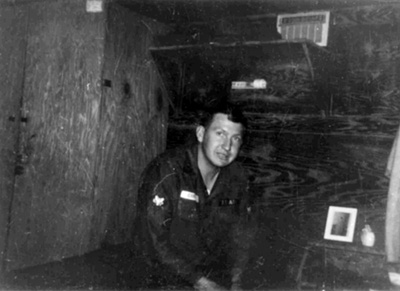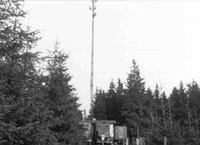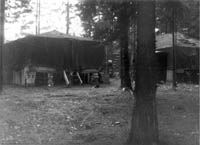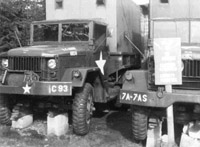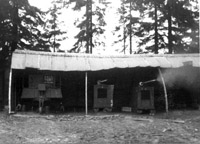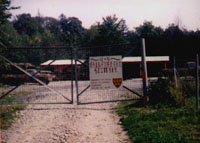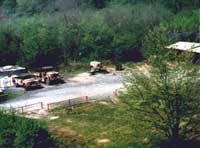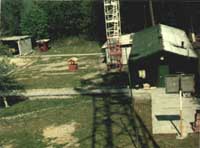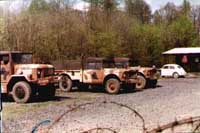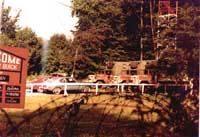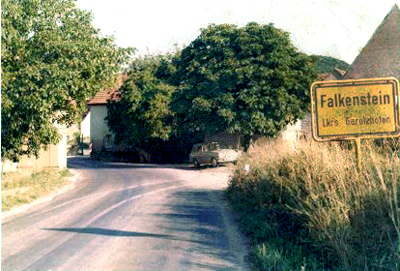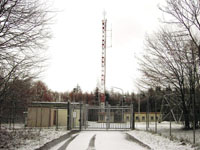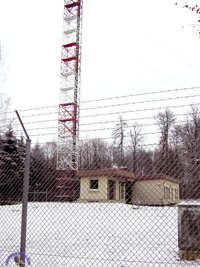| If you do
NOT see the Table of Contents frame to the left of this page, then
Click here to open 'USArmyGermany' frameset |
|||||||||||||||||||||||||||||||||||||||||||||||||||||||||||||||||||||||||||||||||||||||||||||||||||||||||||||||||||||||||||
|
Radio Relay & Terminal Sites |
|||||||||||||||||||||||||||||||||||||||||||||||||||||||||||||||||||||||||||||||||||||||||||||||||||||||||||||||||||||||||||
|
|
|||||||||||||||||||||||||||||||||||||||||||||||||||||||||||||||||||||||||||||||||||||||||||||||||||||||||||||||||||||||||||
|
|||||||||||||||||||||||||||||||||||||||||||||||||||||||||||||||||||||||||||||||||||||||||||||||||||||||||||||||||||||||||||
|
|
|||||||||||||||||||||||||||||||||||||||||||||||||||||||||||||||||||||||||||||||||||||||||||||||||||||||||||||||||||||||||||
| Radio Relay & Terminal Sites | |||||||||||||||||||||||||||||||||||||||||||||||||||||||||||||||||||||||||||||||||||||||||||||||||||||||||||||||||||||||||||
| Signal Sites Operated by the 11th AD Sig Bn | |||||||||||||||||||||||||||||||||||||||||||||||||||||||||||||||||||||||||||||||||||||||||||||||||||||||||||||||||||||||||||
| (Webmaster Note: looking for anyone with more details on the radio relay and terminal sites operated by the 11th and its predecessor.) | |||||||||||||||||||||||||||||||||||||||||||||||||||||||||||||||||||||||||||||||||||||||||||||||||||||||||||||||||||||||||||
|
|||||||||||||||||||||||||||||||||||||||||||||||||||||||||||||||||||||||||||||||||||||||||||||||||||||||||||||||||||||||||||
Over the course of the years that the 11th Sig Bn (and its predecessor) operated radio site, the sites were also given codenames such as: |
|||||||||||||||||||||||||||||||||||||||||||||||||||||||||||||||||||||||||||||||||||||||||||||||||||||||||||||||||||||||||||
| (Source: Information - Rick Anders, Germany; Map - Walter Elkins) | |||||||||||||||||||||||||||||||||||||||||||||||||||||||||||||||||||||||||||||||||||||||||||||||||||||||||||||||||||||||||||
|
|||||||||||||||||||||||||||||||||||||||||||||||||||||||||||||||||||||||||||||||||||||||||||||||||||||||||||||||||||||||||||
| Breungesheim | |||||||||||||||||||||||||||||||||||||||||||||||||||||||||||||||||||||||||||||||||||||||||||||||||||||||||||||||||||||||||||
| 1961 | |||||||||||||||||||||||||||||||||||||||||||||||||||||||||||||||||||||||||||||||||||||||||||||||||||||||||||||||||||||||||||
| (Source: Email from David F. Whereatt) | |||||||||||||||||||||||||||||||||||||||||||||||||||||||||||||||||||||||||||||||||||||||||||||||||||||||||||||||||||||||||||
| The name of the site that you knew it by depended upon when you were assigned to the organization. I was assigned to Det B, 7th Army Sig Sup Unit in Wurzburg from July 1961 to late 1963 when I was reassigned back to the States. I arrived at Relay 10 in January 1962 as an Acting Jack with the pay of a young SP4. I remember the Site as a very new, muddy site carved out of the top of a German ski slope. Needless to say, that did not set very well with the Germans!! The site had been established in late 1961 and utilized TRC-24 relay equipment. We had a couple of trailer houses that came in from France for quarters. A Squad tent served as the supply area. The high winds had the tent in a state of collapse most of the time. The trucks with the '54 vans were parked at the base of the seventy foot pole with the antennae mounted in the upper area of the pole. The generator sets (5KW gas units) were parked near the trucks. The site was not able to maintain a "low profile" because of the mess the engineers had made bringing the site access road in and the fact all that equipment was parked at the top of the ski slope. The place was wild on weekends when thousands of Germans would come to the slope to ski. We took our meals at the German Gashouse at the bottom of the large German Post Office Towers. In July (or August) 1962 we began the move to another location about a Kilometer from there to the location the NATO building was built on. The tower was an AB-216 microwave tower that the site personnel erected. It was erected high enough to clear the trees with the line of site "F Band" antennae. Our quarters were Quonset huts. Far better than the first mess on the ski slope. This site was accepted by the Germans and things went well. We were provided support by a Hawk Battery in Butzbach. Our Det B commander was Capt Parlon L McGivern. The platoon leader was Lt. Jack W. Dice (later transferred to Armor). There were normally seven assigned to the site. Breungeshain was the village at the bottom of the ski slope. The Forstmeister for the Volgsberg Forest lived there. It had a bath house we frequented on Saturday afternoons, as it was only open Saturday afternoons. The original site was on (SP) Horoskopf just a hundred meters or so from the big Bundes Post towers that are still there today.The site was moved over to the southern side of the hill that Taufstein turm stands on. I believe Taufstein was @ approx 778 meters. The site was about fifteen meters below that elevation. Schotten was off in the direction towards Frankfurt. We would go through there to and from Butzbach, unless we were coming from a movie film exchange from Bad Nauheim, then we would come in from the Giessen direction. To get off the "hill" one had to go all the away around your thumb to get started down country. I believe Bristol came about when the NATO site went in. The original "COUNTY" in that area was Schotten, however, after I left the site in late '62, it was changed to VOGELSBERG with plates showing "VB". The "'54" vans were in fact the MRC-54's. We did not have a '73 drop, just relay functions. We shot to Relay 11 @ LOHR, or GEUMUNDEN am LOHR as we knew it back then. We has a shot to Relay 33. Another one went to Hanau. I believe the Battery in Butzbach was from 6th of 59th with HQ in the Hanau area. We were always supporting field problems when batteries would deploy out. We often supported "Test Shots" as new areas were being looked at for possible backup sites and also test shooting for battery field problems. I have been going through some of the other areas and I can answer some of the outstanding questions. Chain was 6/59: Charcoal was 3/7: The Det A radio equipment pictured that you are asking about is a Siemens UHF product that was used mainly by the "K-town" group and tied 69th to 32nd. There was a set running at the Cocktail terminal at the Emery air strip terminal next to A Bat 6/52. On one of your pages, there is a picture of the Horodkopf Bundespost site. Look at the square wooded area in the pront portion of the picy\ture. On the right end of that wooded area is where the original Relay 10 was located. The first "trail" coming across the field is the route the engineers took to plow in the access road for the site. |
|||||||||||||||||||||||||||||||||||||||||||||||||||||||||||||||||||||||||||||||||||||||||||||||||||||||||||||||||||||||||||
| 1964 | |||||||||||||||||||||||||||||||||||||||||||||||||||||||||||||||||||||||||||||||||||||||||||||||||||||||||||||||||||||||||||
| (Source: STARS & STRIPES, Oct 18, 1964) | |||||||||||||||||||||||||||||||||||||||||||||||||||||||||||||||||||||||||||||||||||||||||||||||||||||||||||||||||||||||||||
| Relay 10 Relay 10 is operated by a small detachment of Company C, 7th Army Signal Support Battalion. It is located on a hilltop somewhere in Land Hessen. (The site is about 70 miles from Company headquarters.) The site is a vital link in 7th Army's largest communications network, a network that ties together the far-flung air defense missile units of the 32nd Arty Brigade in southern Germany. Manned by seven enlisted personnel, and encompassing a piece of land only 250 feet wide and 300 feet long, the site operates 24 by 7, relaying ADL (1) information, teletype messages, and voice communications between brigade units and higher headquarters. ADL permits instant, coordinated response, hundreds of times faster than the voice transmission of target information. A black quonset hut serves as barracks, mess hall and day room. The equipment is located in truck-mounted electronics vans at the foot of the radio tower. Water for cooking, drinking, shaving and washing has to be brought in by tanker. For showers, the men have to go to a nearby German village. |
|||||||||||||||||||||||||||||||||||||||||||||||||||||||||||||||||||||||||||||||||||||||||||||||||||||||||||||||||||||||||||
| (1) ADL - Automatic Data Link - is the method of transmitting digital data automatically between firing batteries and command and control facilities. Information transmitted includes number and identification of targets; altitude and azimuth data; firing orders. The use of ADL provides the ability to update targets simultaneously on radar scopes in the firing batteries and on the plotting boards at the control centers; it also ties together long-range radar with short-range radar. | |||||||||||||||||||||||||||||||||||||||||||||||||||||||||||||||||||||||||||||||||||||||||||||||||||||||||||||||||||||||||||
| Donnersberg - DOG | |||||||||||||||||||||||||||||||||||||||||||||||||||||||||||||||||||||||||||||||||||||||||||||||||||||||||||||||||||||||||||
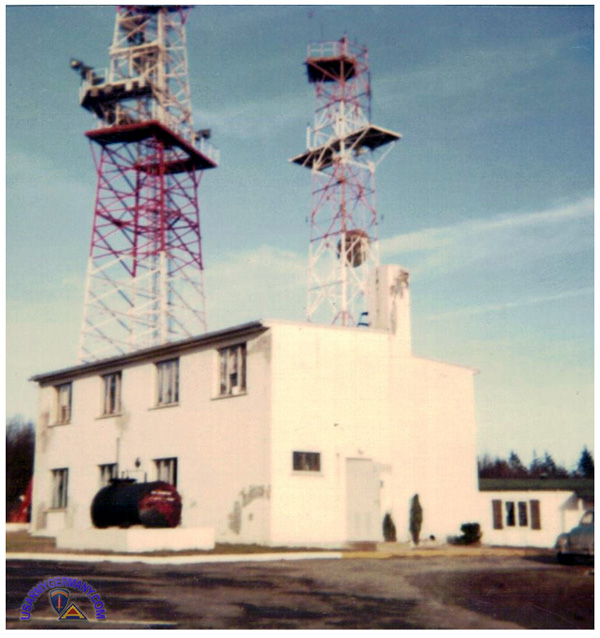 Main building and two towers, Relay Austin, Donnersberg, early 1970s |
|||||||||||||||||||||||||||||||||||||||||||||||||||||||||||||||||||||||||||||||||||||||||||||||||||||||||||||||||||||||||||
| 1971 | |||||||||||||||||||||||||||||||||||||||||||||||||||||||||||||||||||||||||||||||||||||||||||||||||||||||||||||||||||||||||||
| (Source: Email from Albert Kornrumpf) | |||||||||||||||||||||||||||||||||||||||||||||||||||||||||||||||||||||||||||||||||||||||||||||||||||||||||||||||||||||||||||
| Relay Austin My name is Albert Kornrumpf, retired Specialist Four and known to others as Korny. I arrived on site in October 1971 for the first time. On my arrival, as I came to the top of the mountain, we came through the clouds or fog like entering into heaven. As we came through the clouds a burst of sun light hit our faces and then the site appeared to our left. You could see the fenced yard, a couple of white buildings, a few military and civilian vehicles, and this tall 200’ tower. The site also consisted of a tennis / basketball court, a picnic area with a barbeque pit, and surprising enough an evergreen tree that looked like a tall Christmas tree. The site was sitting in a National Park on a mountain 2000 feet tall. The mountain top had a guest house, a small zoo, an old Roman lookout tower, and another military communications site. There were walking trails all over the mountain tops and sides. The main building was a two story house with five bedrooms, one large bathroom, and a half bath, a laundry room, a kitchen with a large pantry, a living room / dining room combo, and an office. The bedrooms were setup to sleep two people with military beds and wall lockers. We did have a life of luxury for the most part with the exception of air condition or central heating. The heating system was a radiator type system the operated off diesel fuel. Also our water supply was a large storage tank in the ground. The water was trucked up to the site once or twice a week. The communications building was connected to the main building. The communications building housed our radio equipment, Armed Forces Television equipment, and had a small equipment repair area. There was also two other buildings, one was a dayroom for entertainment for the soldiers stationed on the site and the other was a generator building for backup power. |
|||||||||||||||||||||||||||||||||||||||||||||||||||||||||||||||||||||||||||||||||||||||||||||||||||||||||||||||||||||||||||
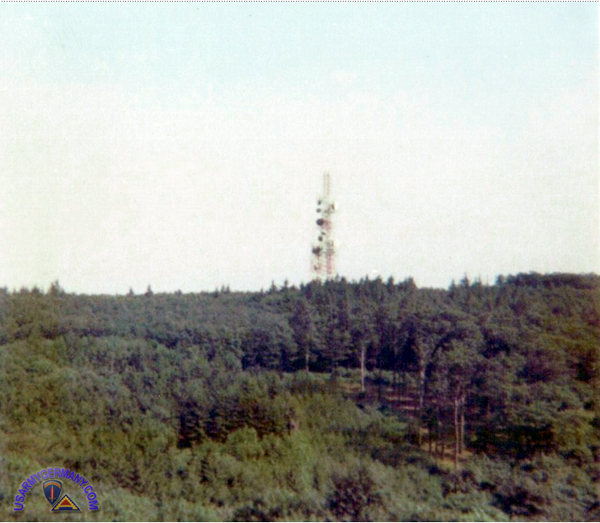 The Relay Austin tower from a distance, early 1970s |
|||||||||||||||||||||||||||||||||||||||||||||||||||||||||||||||||||||||||||||||||||||||||||||||||||||||||||||||||||||||||||
| The site was an Air Force site and the original Army site was in the field next to the Air Force site. It had cable support towers, a metal hut as an operations center. The men lived in the guest house at the bottom of the mountain. At each shift change they would drive up to relieve the last shift. The shift work hours were three days, twelve hours shifts with a twenty-four hour break before the next three nights of twelve hours, and then three days off. It was kind of a nine day week with three day weekends. Later this changed to five days, five nights, and five days off. I came to the site after the site was moved to the Air Force station. The men who served there were from all over the United States. They had various backgrounds and nationalities. It was a great learning experience for me and in a way it was like going to college out of state meeting new people. In other ways we were like a family. Yes, we had our good and bad times just like any family would have, but overall it was great. Our fearless leader was one who took care of his men, site, and thought of us as family. He always respected the civilians in the area. He could also be very hard on you if it was needed and understanding if things were needed. Special times were the holidays, 4th of July, Thanksgiving, and Christmas. On the 4th of July we would have friends come up for a barbeque. Thanksgiving was a time when the site chief and his wife would help in preparing the meal. We would setup a large table with a variety of foods to eat. Some of our friends would include the owner of the guest house and his staff that were on the mountain, and friends of the guys stationed on the site. Some holidays the site chief would take a shift to allow all the guys to have a good time together. Austin was a special place and one of the men wrote an article about the site. It included the life style and how the men felt about being there. This article was written sometime in 1974 just before my return to Austin. |
|||||||||||||||||||||||||||||||||||||||||||||||||||||||||||||||||||||||||||||||||||||||||||||||||||||||||||||||||||||||||||
| As for myself I enjoyed the pleasure of serving my time in heaven twice. My first tour was October 1971 thru December 1973. The second tour was from October 1974 thru November 1977. My thoughts and heart still has Austin in mind. |
|||||||||||||||||||||||||||||||||||||||||||||||||||||||||||||||||||||||||||||||||||||||||||||||||||||||||||||||||||||||||||
|
|||||||||||||||||||||||||||||||||||||||||||||||||||||||||||||||||||||||||||||||||||||||||||||||||||||||||||||||||||||||||||
| Edenkoben | |||||||||||||||||||||||||||||||||||||||||||||||||||||||||||||||||||||||||||||||||||||||||||||||||||||||||||||||||||||||||||
| 1971 | |||||||||||||||||||||||||||||||||||||||||||||||||||||||||||||||||||||||||||||||||||||||||||||||||||||||||||||||||||||||||||
| (Source: Email from Lynn Rich) | |||||||||||||||||||||||||||||||||||||||||||||||||||||||||||||||||||||||||||||||||||||||||||||||||||||||||||||||||||||||||||
| I served at Relay Morgan 1971-1972. There were 6 of us there. Good duty - no officers most of the time. The small village of Wyher was at the bottom of the mountain. I was initially a Spec 4, but was made acting Spec 5 so we could take the trucks back and forth to the missile base. For the first 8 months I was there we had no hot water or shower. They finally installed a hot water heater and shower. Before that we went once a week to the missile base to shower and get food supplies. There were three buildings. One with quarters for three, a kitchen and dining area. A second one had a small rec room and space for three others to sleep. The last building was the radio room that was manned 24/7 by at least one of us. Not sure of the adio equipment we use, seems like ANG 45 radios at the start, then upgraded to newer ones midway thru my tour. I don't remember the designation. The small village of Wyher was at the bottom of the mountain. We had no problems with locals. |
|||||||||||||||||||||||||||||||||||||||||||||||||||||||||||||||||||||||||||||||||||||||||||||||||||||||||||||||||||||||||||
| Eibensbach | |||||||||||||||||||||||||||||||||||||||||||||||||||||||||||||||||||||||||||||||||||||||||||||||||||||||||||||||||||||||||||
| (Source: Email from Thomas Schulz, Germany) | |||||||||||||||||||||||||||||||||||||||||||||||||||||||||||||||||||||||||||||||||||||||||||||||||||||||||||||||||||||||||||
| Click here to see comments on the site and additional information on Utah Relay (26th Sig Bn). | |||||||||||||||||||||||||||||||||||||||||||||||||||||||||||||||||||||||||||||||||||||||||||||||||||||||||||||||||||||||||||
|
|||||||||||||||||||||||||||||||||||||||||||||||||||||||||||||||||||||||||||||||||||||||||||||||||||||||||||||||||||||||||||
| 1981 | |||||||||||||||||||||||||||||||||||||||||||||||||||||||||||||||||||||||||||||||||||||||||||||||||||||||||||||||||||||||||||
| (Source: Email from Dan Bertucci) | |||||||||||||||||||||||||||||||||||||||||||||||||||||||||||||||||||||||||||||||||||||||||||||||||||||||||||||||||||||||||||
| I arrived at 21st Replacement on the 14th December 1981, first time in another country and just after completing basic and AIT at Ft. Dix NJ (home of the infantry and also closed now I understand). From there I was assigned to A Co. 11th Air Defense Signal Bn. in Darmstadt. I only spent 2-3 days in Darmstadt at A. Co. (even met the cook I was replacing, him going home, I just arriving). The drive to Eibensbach was very long, about 3 hours from Darmstadt if I remember correctly, needless to say the first thing I saw was the tower on a site approximately 120 ft x 120 ft. square, fenced and barbed wired site with a very small building just to one side of the lot. The building had three sections, the day room where we watched AAFES movies (always first run on mail days, right out of the theatres, usually three reels that we all took turns setting up) and played card games such as Uno or Spades. The next room as you walked thru the building was the perpetually hot radio room with a fairly good sized rack of microwave equipment, very impressive and very secret (we were told to guard and/or smash all equipment and log/code books upon any kind of take over or such if possible). and then the largest of the three sections incorporated the kitchen area and two dorm type rooms, one quite larger than the other. One sleeping area (the small one) slept two people and the larger slept from 5 to 7 (manpower came and went as tours ended). and the restroom/showers just behind that. The yard was fair sized with a large tin building that held a ping pong table and foosball table, and a few other activity style things. Next to that was a small basketball court where we spent much of our time, summer and winter. In winter we would put on our cold weather gear and have small football games on the basketball court in 2-3 ft of snow. Germans were always walking the road up to the site and looked in with curiosity at the locked gate. There was some sort of rule that the person in charge of the gate key had to jump to alert at the moment someone showed at the gate, german or military. Germans were denied any entry to this secure site but to be very honest there were locals on a couple of occasions that we allowed in to the yard (the radios were never seen but that room was asked about more than once). We had a fantastic time and the locals that we knew seemed to like us. Remembering the times, there were many terrorist alerts when we would actually unlock weapons (had to leave them in the rack but...) just to be ready. Many times we could hear automatic gun fire somewhwere in the distance and were told to be on guard as there were terrorist groups practicing near by. We never had a problem. We had a pretty ethnic mix, couple of 3 white guys, 3 black guys and a puerto rican guy for most of my tour and we all got along great with an occasional rough moment. We went down the hill to Heilbronn once every two weeks if memory serves, did any grocery shopping and took care of any personal needs too. we went in too stuttgart for stereo equipment or when there were enough of us that we could warrant a trip because Stuttgart had far better stores. Everyone had a top of the line stereo at the time. Like Henderson says in the 'Eibensbach 9' article, Sheba, the german sheppherd guard dog/mascott, was awesome, too. She was ok around a uniform but was weary around the germans and always stood her ground. Two or three of us had personal vehicles which we had to go to Heilbronn german driving class to be able to drive. Clarence Henderson and myself bought an Audi 90 for about 1200 marks, if I remember correctly. Wasn't long before Henderson smashed it on the very windy mountain road leading to Site Eibensbach. I think we both laughed it off but it wasn't driveable anymore as Germany had a very strict law about banged up vehicles on the road. The site was always manned, never vaccant. In fact I think atleast two had to stay while the rest took the hour or so trip into Heilbronn. We had three deuce and halfs with radio equipment on the back; 2-3 Dodge 880's and three large generators on trailers parked. We had to drive the trucks once every week as I remember and we would convoy them down to Heilbronn on that day. I personally left at least three letters of commendation hanging on the wall, the others also left they're mark. In the kitchen was a room ringed with awards for radio operations as well as food service and I look back on that time proudly. Anyway, most of the stuff I have read from the 11th Sig guys pertained to operating radios and I hope I gave you a little different perspective. It was only a year and a half for me in Eibensbach and I'll remember that time for the rest of my life with a smile. There's probably a lot more I can tell you. It seems to come back the more I think about it. Would sure love to hear from some of the guys... Michael Brodie, Bob Etheridge (who I tought to play guitar during our stay), SSgt Zaghaschtoko, Clarence Henderson a.k.a. "Dino" (we used to box when we had an argument (with gloves of course)... |
|||||||||||||||||||||||||||||||||||||||||||||||||||||||||||||||||||||||||||||||||||||||||||||||||||||||||||||||||||||||||||
| (Source: Heilbronn Community Circle, October 4, 1982) | |||||||||||||||||||||||||||||||||||||||||||||||||||||||||||||||||||||||||||||||||||||||||||||||||||||||||||||||||||||||||||
| The Eibensbach 9 - low profiles on a landmark By Roy Chaney Sheba paces back and forth across the freshly-mown lawn, pausing occasionally to inspect a given area of grass. Finding a suitable resting place, she flops down and stretches out under the bright morning sun. Sheba, a GI stationed at the Eibensbach remote communications site, wants her tummy scratched. "She's been up here longer than anyone else around," says Pfc. Danny Bertucci. Sheba has over 12 years in the service, and all 12 have been spent at Eibensbach, where she works in the security section. Recently she received the honorary rank of first sergeant. She likes her job. She gets to meet people. "She'll get on the Germans," says Spec. 4 Dino Henderson, "but if you're in uniform she'll keep her distance. Besides that, she's lazy." Henderson adds, "She came up here as a puppy." |
|||||||||||||||||||||||||||||||||||||||||||||||||||||||||||||||||||||||||||||||||||||||||||||||||||||||||||||||||||||||||||
| "We all live in here," says Spec. 4 Charles Caldwell, pointing to the small building that serves as the barracks, headquarters, recreation center, dining facility, and primary duty station for the soldiers. Physical training at the site is made easier with the presence of a combination basketball, tennis, and volleyball court within the perimeter. Running down the long, winding road that leads to the site is also an available form of PT, as is running back up the hill. "We usually run PT," explains Henderson, "most of us play basketball or volleyball." The Signal soldiers are understandably wary when they first hear of their assignment to Eibensbach. "I didn't know what to expect," recalls Caldwell, "but when I got here, I liked it. I'm trying to extend now." As with the other soldiers working on the top of the hill, Caldwell was screened by his Darmstadt headquarters before receiving his Eibensbach orders. They were looking for "people who can assume the responsibilities," states Caldwell. "You have to keep a low profile - stay out of trouble. You have to be pretty well 'at ease.' " On a semi-regular basis, A Co. supervisors send an expedition out to the hill to verify that the profiles are indeed being kept low, and that the soldiers are . . . keeping the radios going; keeping the place up to high standards at all times," says Caldwell, adding that with such a small group of soldiers, working together on a never-ending mission, everybody does their fair share without too much grumbling. "We're kinda close here," Caldwell continues, "We eat together, wake up together . . . it's sort of like a family." Bertucci, the Eibensbach food specialist, agrees that a family atmosphere is evident around the house. "It's just like cookin' for a family," says Bertucci, as he folds table napkins in preparation for the noontime meal. The refrigerator is well stocked, and the sparkling-clean kitchen would be the envy of any suburban mop-wielding housewife. After compiling the week's menu, Bertucci does the shopping at the Heilbronn Commissary. While most Army kitchens deal in pounds and gallons, Bertucci works with ounces and teaspoons, although in some cases, the bulkmindedness of military cooking prevails. "We just buy a whole side of beef," he says, "we've got a meat freezer in the storage room." But, as in a family, complaints are still zinged across the dining table towards the kitchen. However, "they're mostly familytype complaints," says Bertucci, as he places the last folded napkin on top of the stack. After dinner, the off-duty soldiers can retire to (what else?) the den to watch AFN, or sample an ever-increasing collection of Army technical (Tech) tapes. Or they can dust off the movie projector and watch the latest films on the AAFES theater circuit, which are sent directly to Eibensbach from the Heilbronnarea theaters. "Since we don't have the PX or the theater close by," Bertucci surmises, "we've got to have something to do up here." |
|||||||||||||||||||||||||||||||||||||||||||||||||||||||||||||||||||||||||||||||||||||||||||||||||||||||||||||||||||||||||||
| Geigenwang | |||||||||||||||||||||||||||||||||||||||||||||||||||||||||||||||||||||||||||||||||||||||||||||||||||||||||||||||||||||||||||
| 1967 | |||||||||||||||||||||||||||||||||||||||||||||||||||||||||||||||||||||||||||||||||||||||||||||||||||||||||||||||||||||||||||
| (Source: Email from Robert Paul, HHC, 7th Army Sig Spt Bn, Apr 1966 - early 1967; B Co, 7th Army Sig Spt Bn, early 1967 - Apr 1968) | |||||||||||||||||||||||||||||||||||||||||||||||||||||||||||||||||||||||||||||||||||||||||||||||||||||||||||||||||||||||||||
| I was stationed with HHC, 7th Army Sig Support Bn at Kapaun Bks, Kaiserslautern, Apr 1966. I was a mechanic. Went to Etain, France in Dec 1966 TDY with a group to bring back trailers for the relay sites (see STARS & STRIPES information). Then went to B Company at Emery Kaserne in Würzburg, early 1967 ---- was assigned to a mobile mechanic team. We serviced Relays Cadillac, Chrysler, Imperial. Finally, got permanent duty at Relay Chrysler until Apr 1968 when I was sent to Vietnam. Since you are going to post this I will give you some more info ---- the Co B motor pool photo shows the old original german motor pool maint shop from WW2. All the windows in the shop were painted black so they could work at night during air raids. It even had the work pits in the floor to drive the vehicles over so you could work under them. The guy in the photo at Relay Cadillac opposite me on the right side is Gordon Kirchoff----he was the maint team leader. |
|||||||||||||||||||||||||||||||||||||||||||||||||||||||||||||||||||||||||||||||||||||||||||||||||||||||||||||||||||||||||||
|
|||||||||||||||||||||||||||||||||||||||||||||||||||||||||||||||||||||||||||||||||||||||||||||||||||||||||||||||||||||||||||
| Giebelstadt | |||||||||||||||||||||||||||||||||||||||||||||||||||||||||||||||||||||||||||||||||||||||||||||||||||||||||||||||||||||||||||
| 1964 | |||||||||||||||||||||||||||||||||||||||||||||||||||||||||||||||||||||||||||||||||||||||||||||||||||||||||||||||||||||||||||
| (Source: Email from Daniel W. Efirt, Jr. -- photos from Frank Monaco) | |||||||||||||||||||||||||||||||||||||||||||||||||||||||||||||||||||||||||||||||||||||||||||||||||||||||||||||||||||||||||||
|
|||||||||||||||||||||||||||||||||||||||||||||||||||||||||||||||||||||||||||||||||||||||||||||||||||||||||||||||||||||||||||
| Some corrections: Relay 14 should be Relay 32 (Falcon) Terminal 6 was outside of Landshut, east of München (Cocktail Alpha) Relay 19 (Imperial) was 2 miles east of Warngau, on top of Taubenberg. The system terminated at Bad Aibling; also, there was a system at T-4 named Charcoal. So, that means we had seven systems at T-4 Webmaster Note: compare the call signs used for the comm links to radio relay sites with the call signs assigned to the various ADA battalions attached to the 69th ADA Group (see 94th ADA Gp Command & Control Page) Also, B Co had a relay site across the river in Wurzburg I think its name was Opel. A 412-L was at Giebelstadt. It was a joint Missile Control Center, manned by US Air Force & US Army personel. The 69th GP had a section at Giebelstadt out of HQ & HQ of 69th GP. I was told that the MCC at Giebelstadt moved to Lauda, west of Giebelstadt and closer to Relay 32 (Falcon). T-4 was located at the MCC 412-L at Giebelstadt. At Terminal 4, we had the MRC 69s and PU 685 water cool 5KW generators and the CE 106 water cooled 10 KWs. We made our own frame until we got a small patch panel. We also had an extra 69 that 3 of us would go out on test shots. Our site NCOIC was W. E. Raines Sgt (E5). T-6 was by itself. Cocktail Alpha was at Landshut Cat 21 was within the Btry at Giebelstadt Charcoal 24 ?? Challenge 19 was located at the HQ 4/57 Arty, at the BCC just outside of Katterbach (Ansbach) Cocktail 1, 2 & 3 were on the hill behind Emery Barracks, Wurzburg Terminal 3 had systems going to C Co. Daniel W Efird Jr. 1SG (Ret) |
|||||||||||||||||||||||||||||||||||||||||||||||||||||||||||||||||||||||||||||||||||||||||||||||||||||||||||||||||||||||||||
|
|||||||||||||||||||||||||||||||||||||||||||||||||||||||||||||||||||||||||||||||||||||||||||||||||||||||||||||||||||||||||||
| Griesheim | |||||||||||||||||||||||||||||||||||||||||||||||||||||||||||||||||||||||||||||||||||||||||||||||||||||||||||||||||||||||||||
| 1968 | |||||||||||||||||||||||||||||||||||||||||||||||||||||||||||||||||||||||||||||||||||||||||||||||||||||||||||||||||||||||||||
| (Source: Email from Patrick Tempel, 1968- ) | |||||||||||||||||||||||||||||||||||||||||||||||||||||||||||||||||||||||||||||||||||||||||||||||||||||||||||||||||||||||||||
| I was assigned to Charlie Company of the 11th Air Defense Signal Battalion in April 1968. The 31M20 (radio/carrier operator) class the week before us had been sent to Viet Nam from Ft.Gordon, Georgia. There were four of us: Marvin Rayton, Jim Newell, Bob Christopherson and myself, Patrick Tempel. We were met at the station by our 1st Sergeant, "Fearless Freddie" Footman. He was out of uniform and drove a late model Chevy. We just thought he was a mild-mannered, nice guy of no appreciable rank. It's a good thing we didn't ask what we could get away with or anything because he was one of the toughest tops that I ever encountered, but he was always fair and a true gentleman off-duty. We were housed in the Ernst Ludwig Kaserne on the outskirts of Darmstadt. Chris and Jim were sent to Terminal 51 at Wasserkuppe. Marvin and I stayed at Darmstadt. I went to work at Terminal 50 in the fourth garret of one of the buildings. There were Swasticas above the doors that they had tried to chisel away and old German grafitti in some places. We slept in a bay with about 20 other guys. There were many conveniences on the base but it was garrison duty, lots of inspections, harrassing NCOs, lousy food, etc.. I put in for a transfer to 'Nam fairly early. I got to know Darmstadt well enough, went down to Heidelberg and up to Frankfurt a few times. The civilians were pretty nice to us but my money never went very far. I was only a PFC. I did enjoy the parks, the old castle that was now a musem, etc. In the latter part of the summer I was sent to F-band school in Kaiserslautern. That town was completely Americanized, even an A&W that sold real beer. I passed the Spec4 board soon after that but didn't get my rank for a few months. Quite a few of us were introduce to hashish early on. We went to the bars and dance clubs on Saturday nights but mostly hung out at the Launcher E.M. Club. There were some great British Blues bands that came through there as well as German pop and rock groups. I remember seeing Archie Bell in Kaiserslautern one time. In the late autumn I was transferred to Terminal 51 on Wasserkuppe. Other than the 12 hour day six day work week, it was a great duty station. The higest point in the area, it had been a German glider school before the war now it was an Air Force radar station. They still launched gliders right off the mountain when I was there. We had two man rooms, no prowling NCOs other than the site chief, who was harmless. The food and the dining room were outstanding. The club was like you'd find in a lodge in the states, cozy fireplace and all. As it grew colder fishtail frost grew longer and longer on everything, the fence, the guy wires and so on. You could make frost balls out of it which we tossed at one another. I took hikes on my day off, usually by myself. I'd see deer which was a big deal for a city boy like me. The German walkers seemed to turn up everywhere. One night it started snowing and it kept snowing until there was maybe a couple of feet. I couldn't wait to rent some skis and try it out, though I'd never skied before. I got into it fairly quickly and went down the hill to the village every chance that I had. There were lots of German skiers who'd use the two lifts or like me, ski all the way down and take the bus back up for two marks. One Saturday night after a little British USO show three of us got drunk enough to borrow the site 3/4 ton truck and go to town. We had a good time but came back to find the truck missing. We were only a little ways from East Germany and I was sure that the communists had stolen it. We went in different directions looking for it and around dawn I walked up the hill back to the base and went to bed. The other guys had been picked up by the MPs. The truck had been borrowed by another group of GIs from a cavalry base not far away. They kept quiet about my involvement so I never got into trouble over it. But within a month my orders for Viet Nam finally came through. I had changed my mind but it was too late. I went back down to Darmstadt and cleared for a home leave before heading off to war. |
|||||||||||||||||||||||||||||||||||||||||||||||||||||||||||||||||||||||||||||||||||||||||||||||||||||||||||||||||||||||||||
| 1979 | |||||||||||||||||||||||||||||||||||||||||||||||||||||||||||||||||||||||||||||||||||||||||||||||||||||||||||||||||||||||||||
| (Source: Email from Iram Betancourt, Co C, 1979-1982) | |||||||||||||||||||||||||||||||||||||||||||||||||||||||||||||||||||||||||||||||||||||||||||||||||||||||||||||||||||||||||||
| I was there from July 1979 till July 1982, we were in ELK at that time, where I worked in the Tech-Con Section (Operations). It was great duty at first, working out of Bravo-Bravo in Terminal Site 52 in Griesheim; 12 hour shifts either 0800-2000 or 2000-0800, troubleshooting faulty systems or circuits. I had to worry about the ADL, IRR, Maint,or TACOPS lines going to the Q-73. This is where I learned the meat and potatoes of MOS 31N and 31M. We'd be in deep doo-doo if anything went out past 15 minutes. My Bn Commander (great guy) is LTC Dewitt Hathcock, who was the S-4 at that time. I hear CPT Melita McCully is now a COL for a Signal BDE Commander. I made Soldier of the Year for 11th Sig back in 1982, and won the 31N portion of the Signal Rodeo in 1981, and became a judge in 1982. One of my companions then was PFC Oliver Forbes.. I hear he became CSM. Chip Bremer retired and is living in Korea, Edgar Heyer got out and is living with his mom in Brooklyn. Don't know much about SSG Jose Cerda, SGT Darryl Washington, SGT RB Lyons, SP4 Lawrence Sheffield, or SGT Michael Bracey. I do remember having fun running over gigantic jack rabbits at night going to Griesheim, or getting stuck for 45 days in a prolonged field problem at Friedberg because some knucklehead lost his M16. And the best time was when the company sponsored a trip to Lloret de Mar, Spain for 3 days! Everyone got drunk! Those were the days! |
|||||||||||||||||||||||||||||||||||||||||||||||||||||||||||||||||||||||||||||||||||||||||||||||||||||||||||||||||||||||||||
| Melibokus | |||||||||||||||||||||||||||||||||||||||||||||||||||||||||||||||||||||||||||||||||||||||||||||||||||||||||||||||||||||||||||
| 1968 | |||||||||||||||||||||||||||||||||||||||||||||||||||||||||||||||||||||||||||||||||||||||||||||||||||||||||||||||||||||||||||
| (Source: Email from James R. Sottile, Co C, 11th AD Sig Bn, 1968-69) | |||||||||||||||||||||||||||||||||||||||||||||||||||||||||||||||||||||||||||||||||||||||||||||||||||||||||||||||||||||||||||
| Introduction Like many young men in my age group at the time, I was drafted into the military in early 1968, January 16, to be exact. After spending three months in basic training at Ft. Gordon, Georgia, I had a small leave and was promptly back at Ft. Gordon to attend the ‘US Army Southeastern Signal School’ as a 31M20 (Radio Relay and Carrier Attendant) student. Graduation day was June 28th, 1968, when we got to find out our next duty station. Our class was pretty much split down the middle with half having APO NY (Europe) destinations and the other half APO San Fran (Southeast Asia). I was going to Germany. After an overnight train ride to Ft. Dix we managed a few days off and I got to see family and friends before heading out on a charter Eastern Airlines flight to Rhein Main Air Force base. A quick ride in a deuce and a half and we were at Ernst Ludwig Kaserne in Darmstadt, Germany. Not long after that it was a fond fair well to HQ and assignment up the mountain to Radio Relay Rover. Radio Relay Rover Having read the ‘Mountain Men Of Melibokus’ article on this website I can tell you that in the fourteen months or so that I was there our routines were pretty similar. Compared to some of the other sites Rover was not a bad installation as far as being stuck atop a mountain goes. There was a living quarters building with a shower room, kitchen, large day room, and sleeping quarters for onsite personnel. The operations room was a separate building as was the generator building. |
|||||||||||||||||||||||||||||||||||||||||||||||||||||||||||||||||||||||||||||||||||||||||||||||||||||||||||||||||||||||||||
While there in 1968-69 we still had the old steel towers which were not easy to work on especially in the winter and in bad weather. Thankfully it wasn’t something that needed to be done every day but yanking low-loss cable up there was quite a job. In those days we ran two shifts of 12 hours each, two day shifts, two night shifts, two days off. This certainly beat HQ daily formations, guard duty, motor pool duty and endless inspections. We ‘mountain folk’ avoided HQ in Darmstadt as much as possible. There was a ¾ ton truck that we used to go food shopping at the PX once a month (We pooled our money to do so) and to get up and down the mountain. We didn’t have an official cook but if you cooked something edible that everyone else liked, you were the chef that day! Mostly we consumed a lot of processed foods. Rice-A-Roni was a big favorite. There was an abundant supply of water from very large storage tanks in the basement. We never did run out, but the one winter I was there we got pretty low before the German civilian water truck could get up to the site. We also were able to secure a steady supply of first run movies and had our own projector, but no screen, the dayroom wall worked pretty well however in that regard. Not much in the way of recreation was available at Rover but there was always the mountain to walk around on. Not far from the site was a visitor, tourist viewing platform and a small restaurant. We would get lunch there sometimes and a good rate as we also supplied the operator of the little tourist cafe with coffee from our food shopping sprees. This was a good arrangement for everyone as he was able to serve excellent Maxwell House Coffee instead of the crappy German brand and we got cheap bread, cheese, and sausage. It didn’t take long to settle into the routine on the mountain. Yes it was isolated especially in winter. Occasionally if we were working together one of the guys who lived in town with his wife would take me down the mountain with him and I would spend the night with them and have dinner, which was a treat. Having two days off gave us plenty of opportunity to explore the local area, the towns, historic places, scenery and meet the German people. Bensheim, Jugenheim, Heppenheim, Auerbach, and many more where interesting destinations all close by. Darmstadt was especially pretty at Christmas time. Our visiting technical specialist repairman Dennis Stroupe was into fine dining and on several occasions I went to some excellent food establishments with him and he was instrumental in honing my food appreciation skills. Personnel came and went and eventually we were assigned a new SSG site chief. We did not mix well and I knew sooner or later he would find a way to remove me from Melibokus and he did. I was just about a short timer by then (three months to go) and so it wasn’t much of a hardship for me as I did have some support at company HQ and I soon had a clerking job till I left for the US and home. No more glorious sunsets on the mountain, but morning formations, guard duty, and inspections. At least I had basically a 9 to 5 job and a snack bar for lunch. I was lucky enough to get an early separation for the holidays and my effective date of separation was December 20th, 1969. I have never been back although I think I still would like to do so someday. After exploring this website and other it appears that the Melibokus site no longer exists. The new concrete towers are still there and the tourist site. I even managed to find a Melibokus webcam. The views remain as spectacular as they always were. Melibokus webcam: http://www.melibokus.com/ |
|||||||||||||||||||||||||||||||||||||||||||||||||||||||||||||||||||||||||||||||||||||||||||||||||||||||||||||||||||||||||||
|
|||||||||||||||||||||||||||||||||||||||||||||||||||||||||||||||||||||||||||||||||||||||||||||||||||||||||||||||||||||||||||
| 1974 | |||||||||||||||||||||||||||||||||||||||||||||||||||||||||||||||||||||||||||||||||||||||||||||||||||||||||||||||||||||||||||
| (Source: Email from Mike Kitner, "C" Co, 11th AD Sig Bn, 1974-76) | |||||||||||||||||||||||||||||||||||||||||||||||||||||||||||||||||||||||||||||||||||||||||||||||||||||||||||||||||||||||||||
First off let me start by thanking you for setting up this web site, it is great!!!
I was with Charlie Company of the 11th AD SIG Battalion from early 1974 to late 1976. Other than a few days of initial briefing at HQ in Darmstadt, I spent the entire time at Melibokus - or Relay Rover, as it was also called back then. Many, many fond memories of the people I worked with on the mountain those couple of years and also of the many locals I got to know so well - one of which I brought home with me!! I lived on the site for the first 6-12 months I was there and then spent the better part of the next couple of years living in various apartments in the area and commuting up and down the hill. I have been back "on the mountain" several times over the years, usually trying to go up and look around when we go over to visit my wife's family. Much has changed at the site since I was there some 30+ years ago. I do have some pictures of the Melibokus site that I will try to digitize and forward to you for posting. It's difficult to remember much about the rest of the company. I do recall going to a couple of our other sites, but can not remember which ones they were. A few things I can remember:
- We changed from the old FDM (frequency division multiplexing) tube type equipment from the Korean era to the "new" PCM (pulsed code modulation) equipment around 1975.
- We were harassed occasionally by the "terrorist groups" of the period, namely the Red Brigade and Baader Meinhof groups. There was a fair amount of terrorist activities in Europe back then from these groups. We were never hit on Melibokus while I was there but it seems like one of our other sites may have gotten fire bombed?
- Just outside of the perimeter fence on Melibokus there was another US unit that operated a small communication station. Don't quote this as fact but I think I remember the unit as the 440th but not sure who they were associated with.
- We had annual visits by other NATO units who would come up on Melibokus and set up for training periodically - including the Dutch Army - complete with their pony tails!
And mostly my fond memories of the different people I worked with over the years - and have never heard from again!!! If any of you guys ever get to this site and see this drop me a note please -- Andy, Jeter, Artus, Montoya, Jack, McDermott, Clark ..... |
|||||||||||||||||||||||||||||||||||||||||||||||||||||||||||||||||||||||||||||||||||||||||||||||||||||||||||||||||||||||||||
|
|||||||||||||||||||||||||||||||||||||||||||||||||||||||||||||||||||||||||||||||||||||||||||||||||||||||||||||||||||||||||||
| 1981 | |||||||||||||||||||||||||||||||||||||||||||||||||||||||||||||||||||||||||||||||||||||||||||||||||||||||||||||||||||||||||||
| (Source: ABOUT TOWN, Nov 18, 1981) | |||||||||||||||||||||||||||||||||||||||||||||||||||||||||||||||||||||||||||||||||||||||||||||||||||||||||||||||||||||||||||
| The mountain men of Melibokus By Michele McCormick There are just 18 of them. Eight commute and ten work on the site. They're isolated and they're special. "People recognize us when we go down to company," says Sp4 Andy Dennison. "We look sharp. We go out together socially. People call us the mountain men."' The mountain men of Melibokus. |
|||||||||||||||||||||||||||||||||||||||||||||||||||||||||||||||||||||||||||||||||||||||||||||||||||||||||||||||||||||||||||
|
|||||||||||||||||||||||||||||||||||||||||||||||||||||||||||||||||||||||||||||||||||||||||||||||||||||||||||||||||||||||||||
| Breakfast and lunch are prepared in the tiny kitchen by SSgt. Leo Aiello. "My main purpose is to make sure they have a well balanced diet," he says. "We've got a few picky people. Some don't want pork or spicy foods. I try to vary to everybody's pleasure." Once a month the men get together to decide what they're going to want to eat. And despite Aiello's emphasis on nutrition, one soldier says "if you get to know him, he'll make about anything you want." On their free time, the men can watch AFN-TV, thanks to their own ingenuity in rigging up an antenna. And once a week Weaver makes a run to Giessen to pick up five movies from the AAFES system. |
|||||||||||||||||||||||||||||||||||||||||||||||||||||||||||||||||||||||||||||||||||||||||||||||||||||||||||||||||||||||||||
|
|||||||||||||||||||||||||||||||||||||||||||||||||||||||||||||||||||||||||||||||||||||||||||||||||||||||||||||||||||||||||||
| "The idea of war is more real here," says Dennison, "because we know that if war is declared we'll be the first to be blown away. We talk about it. The highest ranking Sp4 would take over." Some of the Germans, Dennison says, think the few American soldiers on Melibokus are there for punishment, that it's a kind of prison. A soldier who does feel that way is not likely to be around for long "If somebody's not satisfied with site life I try to move him," says Weaver: "He can't do a good job if he's dissatisfied. But most find life very bearable." Most, at least, of the present crew seem to find it a lot better than just bearable. "I love the site," says Nesbitt. "It's a new experience. I hope to stay on the site for three years." |
|||||||||||||||||||||||||||||||||||||||||||||||||||||||||||||||||||||||||||||||||||||||||||||||||||||||||||||||||||||||||||
| Mönchberg | |||||||||||||||||||||||||||||||||||||||||||||||||||||||||||||||||||||||||||||||||||||||||||||||||||||||||||||||||||||||||||
| 1967 | |||||||||||||||||||||||||||||||||||||||||||||||||||||||||||||||||||||||||||||||||||||||||||||||||||||||||||||||||||||||||||
| (Source: Email from Craig LaMotte) | |||||||||||||||||||||||||||||||||||||||||||||||||||||||||||||||||||||||||||||||||||||||||||||||||||||||||||||||||||||||||||
|
|||||||||||||||||||||||||||||||||||||||||||||||||||||||||||||||||||||||||||||||||||||||||||||||||||||||||||||||||||||||||||
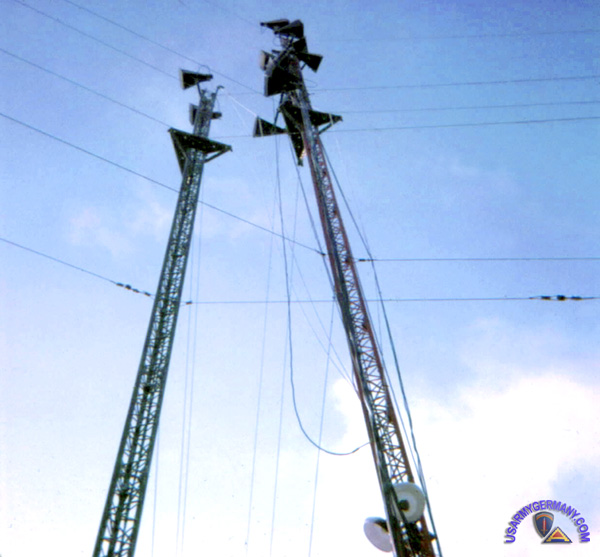 Nice view of both antenna towers at Sunbeam showing the horns |
|||||||||||||||||||||||||||||||||||||||||||||||||||||||||||||||||||||||||||||||||||||||||||||||||||||||||||||||||||||||||||
I also spent some time at Terminal 51 at the Wasserkuppe, at the same time as Patrick Temple. I was the Assistant Site Chief and not sure if I was the "Harmless one" to whom he was referring. I remember the incident well as I had to borrow an AirForce Station Wagon to pick them up. Moved the equipment from a quonset hut into one of the radar domes. Great duty in the winter especial if you liked to ski as it was/is at the top of a ski slope with a rope tow if my memory serves me. Never did take a ride in a glider though. ADDITIONAL INFORMATION The site was as you see it when I got there. I believe the guys that were there when I arrived built it. I think they said they went to France to get the sleeping trailers. Unfortunately I have never been good with names, so I can't remember their names except the Assistant Site Chief Burkhart. The complex that included the kitchen, dayroom, sleeping trailer and bar are made up of two trailers placed side by side with their back doors facing each other. The front door of the Kitchen trailer led into the dayroom which was "added on" constructed from 2X4 and plywood. The front door of the sleeping trailer led to another building that was "added on" of similar construction. It contained the bar and an equipment room with lockers for our field packs and other personal gear. The second trailer near the water trailer was for sleeping only. The "Kitchen trailer" had 2 refrigerators (one for food and one for beer provided by the beer distributor), a bathroom used rarely for baths only. We had to heat water in 5 gal gerry cans on the drip heaters. The Bar was big enough for a couple of small tables. We would occasionally have parties with the Locals after the gasthauses closed. Not visible to the right of the sleeping trailer was a bunker we used to store cases of beer. I was told it was originally for ammo, but found that hard to believe. |
|||||||||||||||||||||||||||||||||||||||||||||||||||||||||||||||||||||||||||||||||||||||||||||||||||||||||||||||||||||||||||
|
|||||||||||||||||||||||||||||||||||||||||||||||||||||||||||||||||||||||||||||||||||||||||||||||||||||||||||||||||||||||||||
| (Source: Email from Bob Kania) | |||||||||||||||||||||||||||||||||||||||||||||||||||||||||||||||||||||||||||||||||||||||||||||||||||||||||||||||||||||||||||
| Was in country July 1966 til Jan 1968 spending most of the time @Sunbeam. Craig LaMotte arrived a few months before I left and I introduced him to Mr and Mrs Thompson who ran the guesthouse downtown that we used all the time. A fellow from Maryland Mark Buchness and I along with Mr Thompson introduced a version of the big mac which became known as the Sunbeam Burger and was featured in the Stars and Stripes. (Click here to read the article.)
I was originally stationed in Würzburg then transferred to Giebelstadt until finally being transferred to Sunbeam in Jan 1967. We built the second radio tower to the right in the picture. Mike Lee and myself did most of the construction. Before that myself and Buchness fixed up the trailer across from the day room. It was in sorry shape when it arrived from France. Giebelstadt Aug 1966 - Jan 1967 Was my first duty station after spending around a month @ Emery Barracks in Wurzburg with Company B attached to the 7th Army. I was a generator mechanic/operator, 52B30 if I remember correctly, and we were billeted in BOQ’s on the Air Base. Site had power and the generators were for backup and only started to keep the batteries charged or if the power went out which it didn’t while I was there. Was great as there were two men to a room who shared a regular bathroom complete with shower with two others in the next room. We also had maid service which took care of the basics. Beds were twin size and not bunk – oh yes also had a fridge in the room and laundry services at the end of the building. If I remember correctly there were 12 rooms/24 men to the building. Being a small Air Base for the radar site it had everything. There was a sports club, movie theater, full size gym complete with basketball court and showers with a steam room. Medical and dental services where also on base as there was a rather large NCO club which for some reason let me and a couple of others become members. Sergeant in charge was a fellow about 25 years old, Arthur Percopio (not sure of the spelling) from Pittsburg. Radio Operators where:
When Percopio left he was replaced by an E6 Lee who had served there before going to Nam. Amazing to find that out when he told me I took the long way back to the site when I picked him up from Wurzburg. Was sent to Sunbeam on an emergency the end of October as they were without power and their mechanic – Weigle from NYC – didn’t have the ability to get the generators fixed. Spent 3 days working in the snow with high winds and freezing weather. Little did I know that this set me up to later replace Weigle. Did not like the place at all – was a big let down from the comfort of Giebelstadt. Sunbeam Jan 1967 – Jan 1968 Weather hadn’t changed much from October except it was colder and more snow. Oh yes within a month I loved the place. With one NCO at the site and no officers it was rather like home. Sergeant in charge was an E5 whom I cannot remember his name. He introduced me to the town of Monchberg and spoke decent German and was married to a German gal and lived off site. Radio operators were:
When Thacker rotated home I was instrumental in getting Mike Lee from Giebelstadt transferred to fill his spot. It helped Mike as it was more money with the FDP and less people with more of a family environment. In the year I was there site command changed three times – replacements where both transfers from Nam. First was an E6 who spent more time off base, with young German fellows, than being present. The last one was also an E6 who started out good but ended up liking the booze way too much. Had to threaten him off site one night when he showed up under the influence and I being senior ranking – SP5 – man on site told him to get or be reported. Story on the shed across from the dayroom between the generator shed and the house trailer. When we got permission to build the onsite bar we worked a deal with a beverage distributor and received a couple of tables with chairs for the bar, glasses, a separate fridge to keep the beer cold and delivery every two weeks. We needed space to store the many cases of beer so we used that shed which was the POL shed. We built a new one behind the radio shed using PSP which allowed better protection and ventilation for the flammables. As stated in my previous email we raised the second radio tower in 1967 with myself and Lee doing the off ground construction of the 6-8 foot sections. We also constructed a helipad from PSP for a prominent inspection early summer 1967 which included a two star general. Was at least 3 choppers that showed up and the lowest ranking man was a captain excluding the pilots and crews. Greens were required and I will never forget that the General and I were having words about the generator system in front of the converted POL shed that was now the beer shed when the German delivery man pulled in for restocking. The General had a surprised look on his face and asked what was happening. The delivery fellow approached for a signature on the invoice carrying two flippys and saluted using his left hand while handing the two of us the beer. Surprised me when the General returned the salute and accepted the beer and shocked me a couple of minutes later when he suggested we enter the generator shed to be out of sight while we indulged. It was then he stated he should put in for a transfer. |
|||||||||||||||||||||||||||||||||||||||||||||||||||||||||||||||||||||||||||||||||||||||||||||||||||||||||||||||||||||||||||
|
|||||||||||||||||||||||||||||||||||||||||||||||||||||||||||||||||||||||||||||||||||||||||||||||||||||||||||||||||||||||||||
| 1981 | |||||||||||||||||||||||||||||||||||||||||||||||||||||||||||||||||||||||||||||||||||||||||||||||||||||||||||||||||||||||||||
| (Source: Bruce Scott, A Co, 1981-85) | |||||||||||||||||||||||||||||||||||||||||||||||||||||||||||||||||||||||||||||||||||||||||||||||||||||||||||||||||||||||||||
I spent four and a half years with A Co 11th AD Sig. The majority of that time at Relay Site Mönchberg. The old name was RS Sunbeam. Our Engineering call sign was Relay VS (Victor Sierra). I'm probably wrong but all A Company sites were "Victor," another company was "Xray," etc.
I arrived in August 1981 and left in January 1985. The concrete "NATO" tower was already there, the tactical Army tower having been replaced a year or so previously.
It was a very small site with six to eight soldiers there at any one time. The NCOIC had a single room, and all the other soldiers shared a single bay. One latrine served everyone. I brought my wife overseas after a few months and lived in Hobbach, 10 to 15 minutes down the road.
Three line of sight tactical radio systems were in place. The S-250 shelters were on the ground and powered commercially. The Dodge M 880s were parked and driven occasionally. The tactical 3kw (mogas) generators were a constant source of maintenance.
I don't want to give inaccurate information, but I'll try to recollect the three different "shots" (links). At least one (& maybe two) relayed via XS to TAA (Darmstadt) on one end, and to Wurzburg on the terminating end (I do not recall the terminal call sign). One link relayed through us from Wurzburg to Babenhausen. Wertheim may have been the terminal site for the other Darmstadt link.
As for the name change from Sunbeam to VS, I do not know the exact reason for the change. The site was referred to as Relay VS (Romeo Victor Sierra) when I arrived in 1981. Old timers (& many German locals) continued to call the site "Sunbeam."
A TMP (transportation motor pool) VW vanagon from Aschaffenburg military community was our main source of transportation.
In the dark days before VHS and AFN TV, our prime source of entertainment was 16 mm movies the went traveled through the mail from Wertheim to us and on to a site I cannot recall. If no movies came in a week or so, we would call the folks at Wertheim, and pick them up directly if they had any. I was fortunate enough to see the site be vastly improved over the years. A prefab day room was installed in 1982, and in late 1983 another prefab bldg. separated into three or four bed rooms was installed, greatly improving living conditions. During that time a remodel took place and the kitchen, dining room, latrine and "operations area" was improved/updated.
In 1984 a system of ramps were built to place the S-250 shelters on, so the site soldiers could load them on to the M 880s without wrecker support. We did deploy to the field once or twice in my final 12 months using that system.
Another signal unit operated a LOS microwave system (the reason for the concrete tower) that was remotely monitored. Maint crews showed up occasionally and opened their shelters and back up generators.
Seeing your website has brought back some great memories. Unfortunately, I won't have much time to dig anything up, or send you pictures. Tomorrow I deploy to Ft Lewis, WA for KFOR deployment.
With any luck I may get to visit the FRG in 2005 and will attempt to visit old "hangouts." |
|||||||||||||||||||||||||||||||||||||||||||||||||||||||||||||||||||||||||||||||||||||||||||||||||||||||||||||||||||||||||||
| (Source: Email from Steven Wessel) | |||||||||||||||||||||||||||||||||||||||||||||||||||||||||||||||||||||||||||||||||||||||||||||||||||||||||||||||||||||||||||
| I served with and at the same units as one of your contributors, Bruce Scott, Relay Site Mönchberg, we were good friends. Thank you so much for posting this info. It has brought tears to my eyes. I have some pictures I could send you if you are interested. Are there any personnel rosters for this time period? I would really like to look up old friends that served with me. |
|||||||||||||||||||||||||||||||||||||||||||||||||||||||||||||||||||||||||||||||||||||||||||||||||||||||||||||||||||||||||||
|
|||||||||||||||||||||||||||||||||||||||||||||||||||||||||||||||||||||||||||||||||||||||||||||||||||||||||||||||||||||||||||
| 1988 | |||||||||||||||||||||||||||||||||||||||||||||||||||||||||||||||||||||||||||||||||||||||||||||||||||||||||||||||||||||||||||
| (Source: Email from Matt M., 11th AD Sig Bn, 1988-1991) | |||||||||||||||||||||||||||||||||||||||||||||||||||||||||||||||||||||||||||||||||||||||||||||||||||||||||||||||||||||||||||
| I was stationed there (in HHC) from July of 1988 to April 1991. The website you've put together is pretty interesting, especially the detail of the different radio sites manned by the unit I was in. I spent many days on quite a few of the sites, some I remember, some I don't (it was dark and rainy), but of those, I spent the most time at Melibokus and Mönchberg. I did go to Eibensbach more than once, and a few others as well. I was on an FM Retrans team for quite some time, and visited these sites on a weekly basis, doing our regular Comex, setting up, operating for a day or so and tearing down, repeating the process every week. A lot of time was spent on the road, traveling around and operating the mobile radio relay, and I enjoyed it quite a bit. My section sergeant and I were untouchable to a certain extent, because we had a definite "mission" to accomplish. I remember the guard dogs ("Schotze" and I made friends!) at Eibensbach, and a guy showing me card tricks at 1:30am in the morning in his van. I remember Melibokus and climbing the concrete tower to watch F-16s scream by. I remember Wasserkuppe, and looking across the border and seeing the East Germans looking back, and the high state of readiness at that site. It all had a very strong impression on me at the time. Memories to last a lifetime, that's for sure. If my memory serves me correctly, Melibokus was X-ray/Sierra and Monchberg was X-ray/Tango. I really can't think of any of the others short of the fact that there were two additional radio sites in garrison on CFK. The NOC and the UHF rigs that ran 24/7. I don't remember the name of the site in the motorpool, but it was there. Each company had one Retrans Team. Teams were usually two people, the team chief and one lower enlisted, sometimes a backup. The team I was on was mixed in with the RATT riggers, the radio teletype guys. I think we were two squads of about 10 people. Anyway, the rig that I ran was a CUCV, a pickup, with a soft top in the back, and a set of four FM radios on a rack in the bed of the truck, two active and two backup. Our purpose was to go out and relay FM radio traffic from two distant sites that were too far apart, or that had geographic barriers in between. We would go out, set up, turn on the radios and they would relay the traffic automatically. From one radio on one frequency, the traffic would be transferred to the other radio and sent out on another freuqency. Of couse we had secure gear and power and antennas and generators and all that too. The equipment was Vietnam era vintage so it was always breaking down. I learned to troubleshoot electronics that way! |
|||||||||||||||||||||||||||||||||||||||||||||||||||||||||||||||||||||||||||||||||||||||||||||||||||||||||||||||||||||||||||
|
|||||||||||||||||||||||||||||||||||||||||||||||||||||||||||||||||||||||||||||||||||||||||||||||||||||||||||||||||||||||||||
| 1986 | |||||||||||||||||||||||||||||||||||||||||||||||||||||||||||||||||||||||||||||||||||||||||||||||||||||||||||||||||||||||||||
| (Source: Email from Rene Joyner, last site chief of Radio Site Mönchberg) | |||||||||||||||||||||||||||||||||||||||||||||||||||||||||||||||||||||||||||||||||||||||||||||||||||||||||||||||||||||||||||
| I was the last site Commander of Radio site Monchberg for the 11th AD Signal Battalion. I commanded the site from May 1986 until July 1991. The site changed quite a bit from the pictures that I see posted. The Site Commander before me was SFC Asbruck. Originally it was under 11th AD Signal Company Bravo. Then placed under Charlie Company. We were to go to Alpha company; but the site was closed before it was fully transferred. I was presented the site’s last flag that waved its colors. The last Battalion Commander was LTC. Whitehead and CSM L.A. Gandy. I really miss my site. Since I live here in Germany I have gone back a few times to look at what is left. The only thing left now is the generator shed and the tower. Telekom now owns the site. The same with the XT site outside of Giessen. It also belongs to Telkom and the German Army. The barracks was remodeled into a hotel for guests. Thanks for maintaining a memory of the past not to be forgotten. |
|||||||||||||||||||||||||||||||||||||||||||||||||||||||||||||||||||||||||||||||||||||||||||||||||||||||||||||||||||||||||||
| Reinwarzhofen | |||||||||||||||||||||||||||||||||||||||||||||||||||||||||||||||||||||||||||||||||||||||||||||||||||||||||||||||||||||||||||
| (Source: Email from Robert Paul, HHC, 7th Army Sig Spt Bn, Apr 1966 - early 1967; B Co, 7th Army Sig Spt Bn, early 1967 - Apr 1968) | |||||||||||||||||||||||||||||||||||||||||||||||||||||||||||||||||||||||||||||||||||||||||||||||||||||||||||||||||||||||||||
|
|||||||||||||||||||||||||||||||||||||||||||||||||||||||||||||||||||||||||||||||||||||||||||||||||||||||||||||||||||||||||||
| 1983 | |||||||||||||||||||||||||||||||||||||||||||||||||||||||||||||||||||||||||||||||||||||||||||||||||||||||||||||||||||||||||||
| (Source: Email from Gary Standridge) | |||||||||||||||||||||||||||||||||||||||||||||||||||||||||||||||||||||||||||||||||||||||||||||||||||||||||||||||||||||||||||
| Radio Site Reinwarzhofen was operated by B Co, 11th Signal Battalion out of Wurzburg during my stay from 1983 til 1986. I was stationed there for an extended tour and loved every minute of it. I was there again in June of 2005. A town I never thought would grow has grown from 4 houses to aproximately 40 houses. Our barracks, or guest house that the government supplied for us, is now a privately owned home. It is a different town now. |
|||||||||||||||||||||||||||||||||||||||||||||||||||||||||||||||||||||||||||||||||||||||||||||||||||||||||||||||||||||||||||
| Reisenbach | |||||||||||||||||||||||||||||||||||||||||||||||||||||||||||||||||||||||||||||||||||||||||||||||||||||||||||||||||||||||||||
| 1971 | |||||||||||||||||||||||||||||||||||||||||||||||||||||||||||||||||||||||||||||||||||||||||||||||||||||||||||||||||||||||||||
| (Source: Email from Paul Diaz, Co "A," 1971-73) | |||||||||||||||||||||||||||||||||||||||||||||||||||||||||||||||||||||||||||||||||||||||||||||||||||||||||||||||||||||||||||
| I want to give some input that I have not come across going thru your website. I was assigned to Co. A, 11th Sig. Battalion, 32nd AADCOM on Kleber Kaserne in Kaiserslautern between Feb.1971 to July 1973. From May 1971 to July 1973 I was put on a Radio Relay site called Relay Capri which was located in Reisenbach, Germany. The following is a link to Relay Capri - link. We had a radio shot going to D Battery in Dallau, Germany and one to B Battery in Landau, Germany. We also had 26L ( Troposcatter ) on our site. We had so much fun and parties during our tour in Reisenbach, the days where like Sundays and the evenings where like Saturday nights. I myself never left Germany. Also, the type equipment that we used were both the AN/GRC-50 and TRC-24 Radios for commo between Dallau and Landau. Only the 11th Sig. Bn. was present on site during my tour -- I also read that the 34th Sig. Bn. used to occupy this site. |
|||||||||||||||||||||||||||||||||||||||||||||||||||||||||||||||||||||||||||||||||||||||||||||||||||||||||||||||||||||||||||
| Taufenberg | |||||||||||||||||||||||||||||||||||||||||||||||||||||||||||||||||||||||||||||||||||||||||||||||||||||||||||||||||||||||||||
| (Source: Email from Robert Paul, HHC, 7th Army Sig Spt Bn, Apr 1966 - early 1967; B Co, 7th Army Sig Spt Bn, early 1967 - Apr 1968) | |||||||||||||||||||||||||||||||||||||||||||||||||||||||||||||||||||||||||||||||||||||||||||||||||||||||||||||||||||||||||||
|
|||||||||||||||||||||||||||||||||||||||||||||||||||||||||||||||||||||||||||||||||||||||||||||||||||||||||||||||||||||||||||
| Taufstein | |||||||||||||||||||||||||||||||||||||||||||||||||||||||||||||||||||||||||||||||||||||||||||||||||||||||||||||||||||||||||||
| 1990 | |||||||||||||||||||||||||||||||||||||||||||||||||||||||||||||||||||||||||||||||||||||||||||||||||||||||||||||||||||||||||||
| (Source: Email from Jeff Berger) | |||||||||||||||||||||||||||||||||||||||||||||||||||||||||||||||||||||||||||||||||||||||||||||||||||||||||||||||||||||||||||
| I have tons of stories\info, but no time to put them in an email. I can say that Melibokus was a Radio Relay Site (I thought the call sign was X-Ray Uniform) - Radio Site Taufstein was X-Ray Tango. I was stationed at Taufstein for 2 1/2 years until the summer of 1990 - C Co, 11th Signal Bn. I remember all that the site was involved with, and I recall most of the people stationed there during my stay there. |
|||||||||||||||||||||||||||||||||||||||||||||||||||||||||||||||||||||||||||||||||||||||||||||||||||||||||||||||||||||||||||
| Zabelstein (a.k.a. Falkenstein) | |||||||||||||||||||||||||||||||||||||||||||||||||||||||||||||||||||||||||||||||||||||||||||||||||||||||||||||||||||||||||||
| 1965 | |||||||||||||||||||||||||||||||||||||||||||||||||||||||||||||||||||||||||||||||||||||||||||||||||||||||||||||||||||||||||||
| (Source: Email from James Nelson, 1965-67) | |||||||||||||||||||||||||||||||||||||||||||||||||||||||||||||||||||||||||||||||||||||||||||||||||||||||||||||||||||||||||||
|
|||||||||||||||||||||||||||||||||||||||||||||||||||||||||||||||||||||||||||||||||||||||||||||||||||||||||||||||||||||||||||
|
|||||||||||||||||||||||||||||||||||||||||||||||||||||||||||||||||||||||||||||||||||||||||||||||||||||||||||||||||||||||||||
| 1974 | |||||||||||||||||||||||||||||||||||||||||||||||||||||||||||||||||||||||||||||||||||||||||||||||||||||||||||||||||||||||||||
| (Source: Email from Herbert Hept, 1974-76) | |||||||||||||||||||||||||||||||||||||||||||||||||||||||||||||||||||||||||||||||||||||||||||||||||||||||||||||||||||||||||||
|
|||||||||||||||||||||||||||||||||||||||||||||||||||||||||||||||||||||||||||||||||||||||||||||||||||||||||||||||||||||||||||
| (Source: Mike Bonham) | |||||||||||||||||||||||||||||||||||||||||||||||||||||||||||||||||||||||||||||||||||||||||||||||||||||||||||||||||||||||||||
|
|||||||||||||||||||||||||||||||||||||||||||||||||||||||||||||||||||||||||||||||||||||||||||||||||||||||||||||||||||||||||||
| 1981 | |||||||||||||||||||||||||||||||||||||||||||||||||||||||||||||||||||||||||||||||||||||||||||||||||||||||||||||||||||||||||||
| (Source: Rick Newfer, 1981-83) | |||||||||||||||||||||||||||||||||||||||||||||||||||||||||||||||||||||||||||||||||||||||||||||||||||||||||||||||||||||||||||
| I was stationed on Radio Relay Site Zabelstein, from Jan. 1981 until June of 1983. Our radio call sign was WHISKEY SIERRA. Our other sites were WHISKEY TANGO, WHISKEY VICTOR and at this moment there is one more which the name eludes me. Our Company radio site was in Wurzburg. It's call sign was GULF BRAVO. I was on the site until they started building the new site in the spring of 1983, behind the old site. At the time our site chief was Staff Sergeant Christopher Chandler. Ssome of the other members were Dale Falsgraft, Theodore Enlow, Michael Adams, Sergeant McGraw, Rick Judy, Sergeant Gibson. Our living quarters were in a small town at the base of the mountain, Donnersdorf. It would take about 10-12 minutes to get to the site, from the house. At the time we were the only site in our company that ran on generators. We had two 30Kw generators that we had to fill with diesel at the end of the shift. We had to use 5 gallon jerry cans. We had to go into Schweinfurt, everyday to sign out our vehicle. I remember an entry from PFC Katherine Bartelle, about REFORGER 82, I remember a incident. We received the heads up that we were going to have aggressors attack the site. With us up on the top of the mountain. We had the best vantage point. We sent out patrols to both ends of the hill and we laid and waited for them. I do know that they didn't have much info on the site lay out. In the photos of Zabelstein, you can see the German site next to us. The German site had a 3 foot fence on three sides of it. On the back, it was against our 12-foot fence. The attack force jumped the little fence they thought they had it made. That they were on our site. What they didn't know that we had time to put TWO M-60 machine gun nests. When they came around the German building they were caught in the cross fire. Were they surprised. Our site received a letter of commendation. |
|||||||||||||||||||||||||||||||||||||||||||||||||||||||||||||||||||||||||||||||||||||||||||||||||||||||||||||||||||||||||||
| (Source: Email from Herbert Hept who served with a German Bundeswehr engineer unit) | |||||||||||||||||||||||||||||||||||||||||||||||||||||||||||||||||||||||||||||||||||||||||||||||||||||||||||||||||||||||||||
| There was a radio site from 1st Platoon, Company B, 11th AD Signal Battalion near my hometown (about 4 miles away) on the top of the hill named Zabelstein in the Steigerwald. The designation of the site during the 1970's was "RELAY BUICK" , in the early 1980s it was "RADIO SITE FALKENSTEIN" and during the last years (about 1985-91) it was called "RADIO SITE ZABELSTEIN". I have a lot of photos from the years 1973-1988. During many CPX`s, Company D, 34th Signal Battalion (VII Corps) was at the site with radio shelters on 2-½ ton trucks . I'm especially interested in any information about this specific "RADIO SITE", because I had some friends up there. (I guess this was the "kick-off" for my interest in "army-stuff"). Viele Grüsse aus Germany Herbert Hept |
|||||||||||||||||||||||||||||||||||||||||||||||||||||||||||||||||||||||||||||||||||||||||||||||||||||||||||||||||||||||||||
|
|||||||||||||||||||||||||||||||||||||||||||||||||||||||||||||||||||||||||||||||||||||||||||||||||||||||||||||||||||||||||||
| Related Links: |
|||||||||||||||||||||||||||||||||||||||||||||||||||||||||||||||||||||||||||||||||||||||||||||||||||||||||||||||||||||||||||
